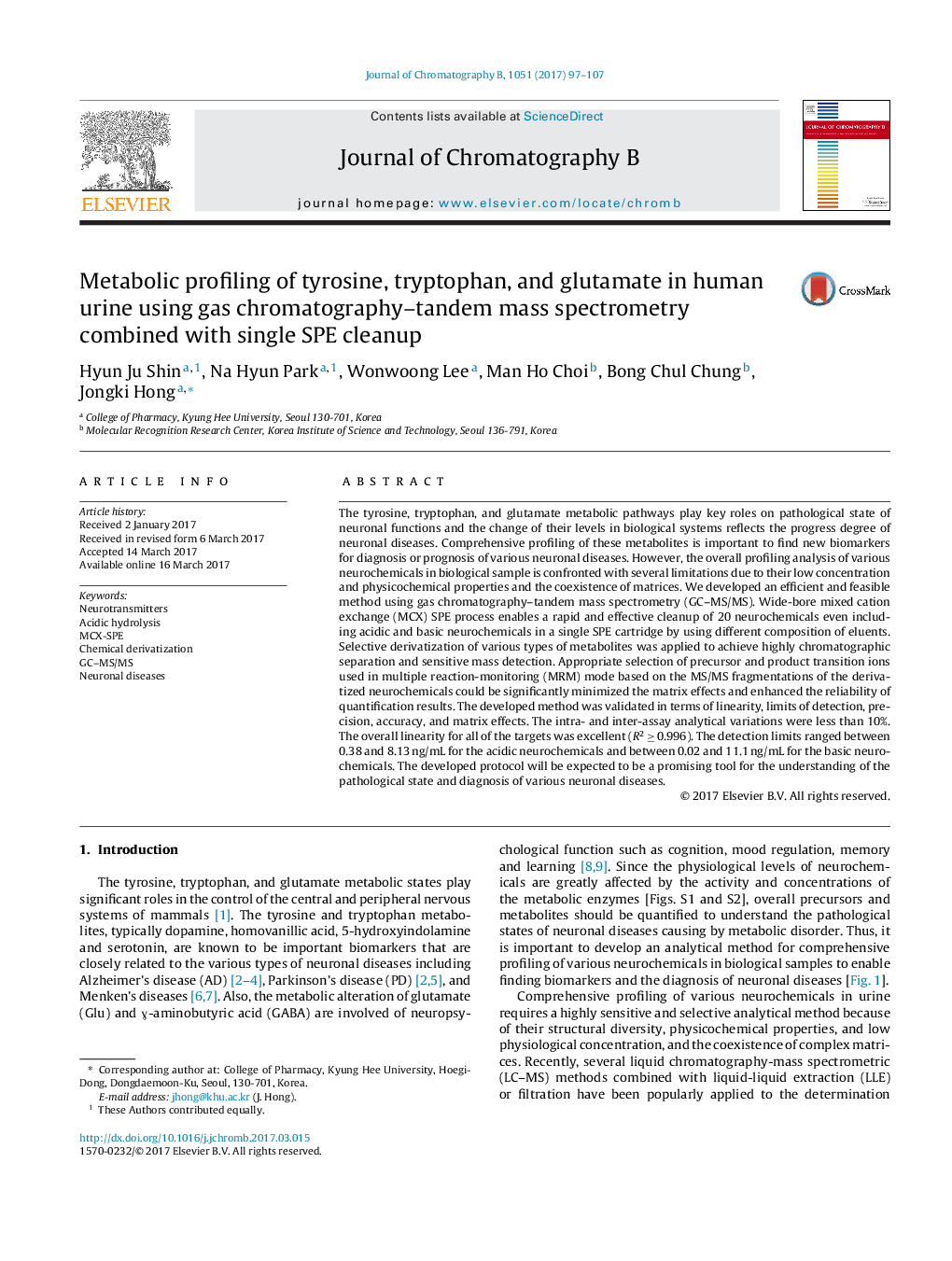| Article ID | Journal | Published Year | Pages | File Type |
|---|---|---|---|---|
| 5136375 | Journal of Chromatography B | 2017 | 11 Pages |
â¢A GC-MS/MS method for the metabolic profiling of tyrosine, tryptophan, and glutamate in urine.â¢Significant decrement of hydrolysis yields for indole amines under high HCl concentration.â¢Single MCX-SPE cartridge for rapid cleanup of acidic and basic neurochemicals in urine.â¢Selection of appropriate MRM transition ions based on MS/MS fragmentations.â¢Overall profiling and reliable quantification of acidic and basic targets in urine for finding biomarkers.
The tyrosine, tryptophan, and glutamate metabolic pathways play key roles on pathological state of neuronal functions and the change of their levels in biological systems reflects the progress degree of neuronal diseases. Comprehensive profiling of these metabolites is important to find new biomarkers for diagnosis or prognosis of various neuronal diseases. However, the overall profiling analysis of various neurochemicals in biological sample is confronted with several limitations due to their low concentration and physicochemical properties and the coexistence of matrices. We developed an efficient and feasible method using gas chromatography-tandem mass spectrometry (GC-MS/MS). Wide-bore mixed cation exchange (MCX) SPE process enables a rapid and effective cleanup of 20 neurochemicals even including acidic and basic neurochemicals in a single SPE cartridge by using different composition of eluents. Selective derivatization of various types of metabolites was applied to achieve highly chromatographic separation and sensitive mass detection. Appropriate selection of precursor and product transition ions used in multiple reaction-monitoring (MRM) mode based on the MS/MS fragmentations of the derivatized neurochemicals could be significantly minimized the matrix effects and enhanced the reliability of quantification results. The developed method was validated in terms of linearity, limits of detection, precision, accuracy, and matrix effects. The intra- and inter-assay analytical variations were less than 10%. The overall linearity for all of the targets was excellent (R2 â¥Â 0.996). The detection limits ranged between 0.38 and 8.13 ng/mL for the acidic neurochemicals and between 0.02 and 11.1 ng/mL for the basic neurochemicals. The developed protocol will be expected to be a promising tool for the understanding of the pathological state and diagnosis of various neuronal diseases.
